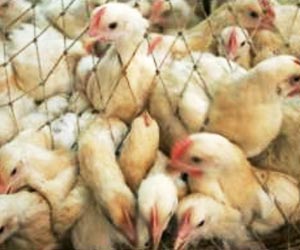Researchers monitored the continuing avian flu pandemic to gauge its evolving risk to both humans and birds.

Rapid evolution of A(H5N1) influenza viruses after intercontinental spread to North America
Go to source). The researchers genetically traced the virus’ expansion across the continent and its establishment in wild waterfowl populations to understand what makes it so different. The study was recently published in Nature Communications.
“We haven’t seen a virus quite like this one,” said corresponding author Richard Webby, Ph.D., St. Jude Department of Infectious Diseases. “In 24 years of tracing this particular H5N1 flu lineage, we haven’t seen this ability to cause disease but also be maintained in these wild bird populations.”
When the scientists tested the newer avian flu strains for their ability to cause disease in mammals by infecting a ferret model, they found an unexpectedly high amount of pathogenicity.
“Some of these are really nasty viruses,” Webby said. “There’s a huge amount of the virus in the brain of infected animals. That’s the hallmark of what we saw with these flu strains — increased pathogenicity associated with high virus load in the brain. That’s not the first time we’ve seen H5 viruses in the brain, but these are probably some of the most virulent we’ve looked at over 24 years of following these viruses.”
Previous influenza viruses that caused severe disease in North America “burned out” in their main host bird population, and the outbreaks ended quickly. This current strain was detected at high levels in sick chickens but has expanded into other species.
“This is not just a chicken virus now,” Webby said. “It’s also infecting other avian and mammal species in the U.S. It’s a higher exposure risk for humans and other mammals than we’ve ever had in North America. We’ve never really been exposed to this level of circulation of these highly pathogenic flu viruses.”
A Low Risk to Humans
While the newer strains of this H5N1 influenza show a greater ability to cause disease in mammals than earlier viruses, the scientists found it to be low-risk to humans. This is because the virus appears well-adapted to transmit between birds rather than between mammals.Advertisement
Even though the risk of spreading infection is low, the research suggests humans should be cautious interacting with wildlife.
Advertisement
Genetic Change Supercharges Spread and Severity
In the past, similar strains of influenza viruses have not caused similarly severe diseases, nor have they become far-flung in wild bird populations. Since the new strains have done so much more damage, the scientists looked for what was different. The group identified the direct ancestor to the current strains, which spread from Europe to the Americas after gaining a different version of the viral protein, neuraminidase. This new protein increased the virus’s ability to transmit between birds. Then it arrived on the East Coast of Canada and traveled to the United States.As the researchers studied the virus further, they pinpointed which viruses — distinct from previous ones —caused the current outbreaks. They found that after reaching North America, the virus rapidly changed again to become more virulent. It mixed with flu viruses in North American wild birds, swapping several genes. This reassortment of genes had two effects. One, the virus seemed to become even more adapted to the bird population, infecting many different types of birds. This included atypical hosts, such as buzzards and eagles, which typically do not get the flu. Second, the virus gained its severe disease-causing properties.
“The surprising thing was that just a few reassortment events did change these viruses’ ability to cause disease in our models,” Webby said. “And those events generated many different genotypes from that mixing. Then those viruses spread and have now become established in the North American wild bird population.”
Reference:
- Rapid evolution of A(H5N1) influenza viruses after intercontinental spread to North America - (https://www.nature.com/articles/s41467-023-38415-7)
Source-Eurekalert







